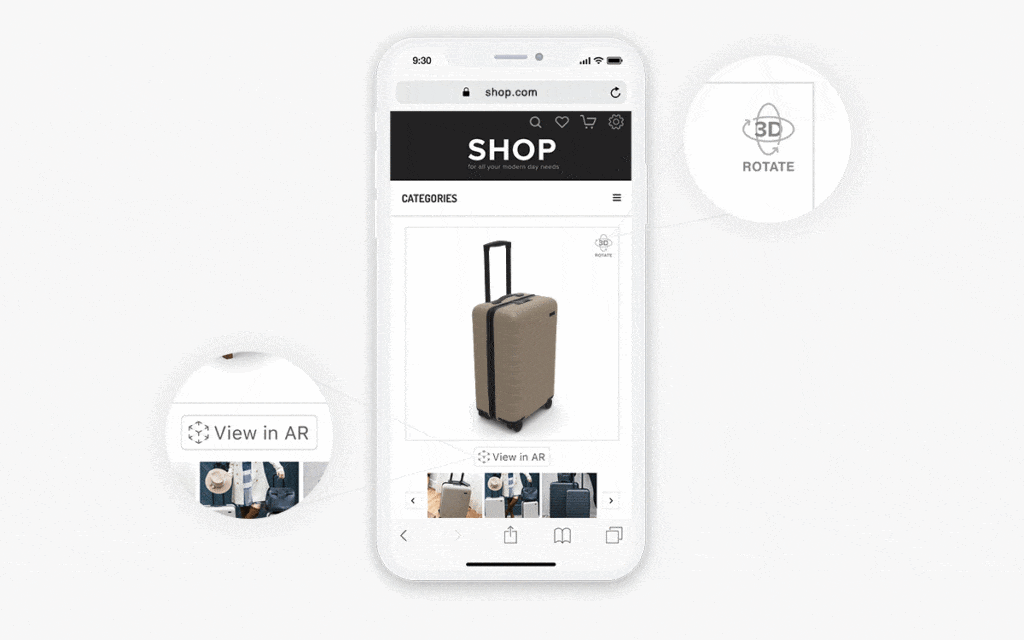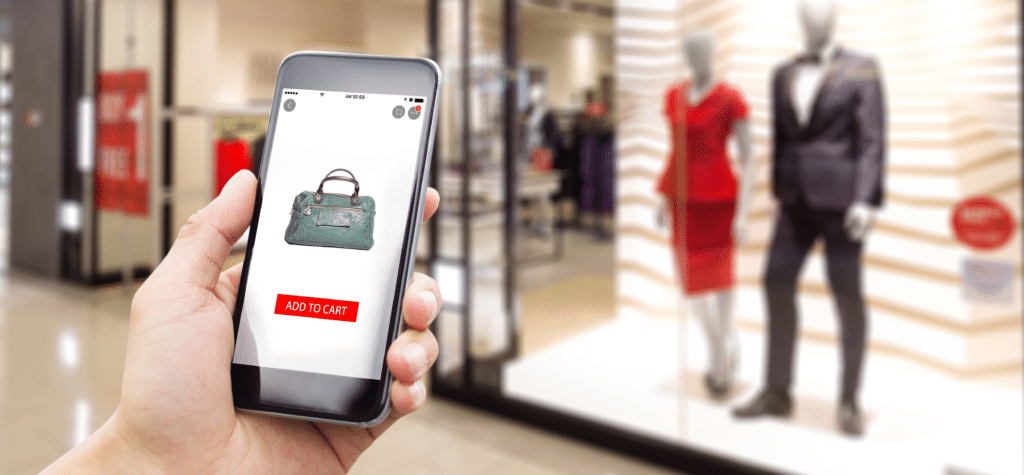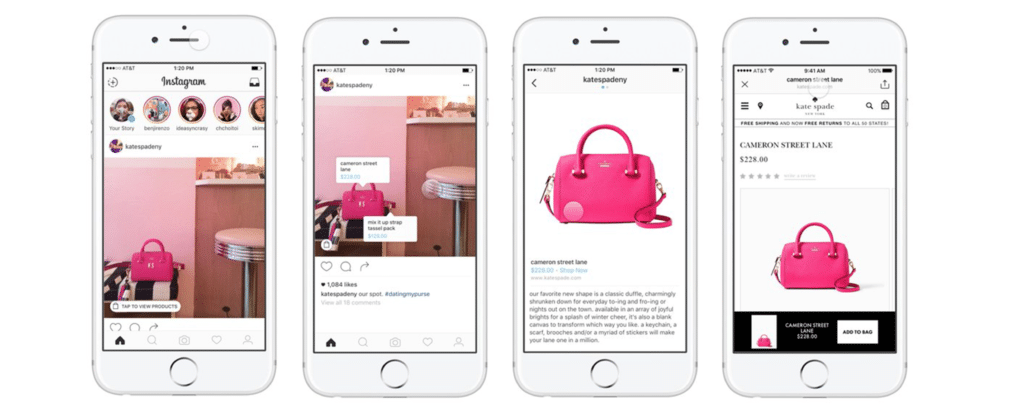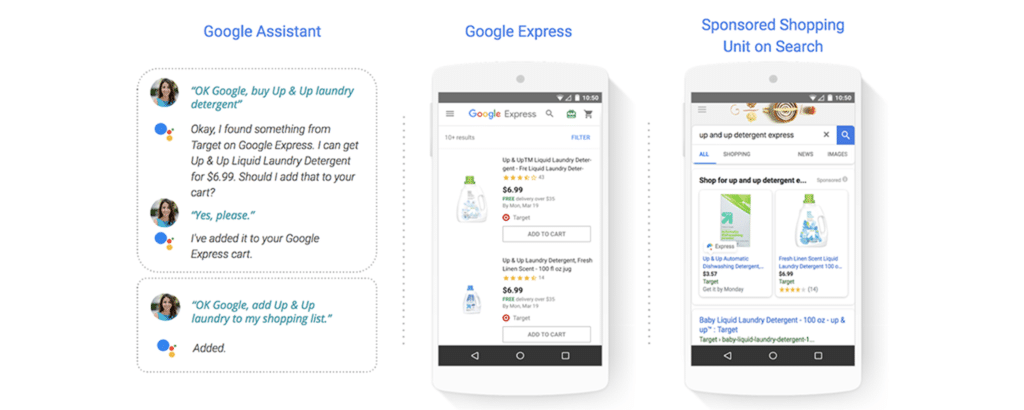The 2019 Essential Retail Innovations
Since the dawn of the internet, the constant and rapid growth of eCommerce has categorically changed the way we shop, ensuring brands and retailers must evolve their selling strategies in order to remain competitive. According to Statista, eCommerce sales are projected to make up 17.5% of all retail sales worldwide by 2021, accounting for roughly 4.88 trillion USD in revenue. Clever merchants are pioneering the trends that have elevated the online shopping journey to what it is today. This year brings a fresh set of consumer-driven trends guiding the eCommerce evolution. They aren’t entirely new, but they are entirely necessary for brands looking to inspire and keep consumer loyalty. From leading with mobile to integrating artificial intelligence, we’ve highlighted the essential innovations for 2019.
Mobile-First Commerce
The focus on mobile here certainly isn’t new, but it is gaining momentum. Google recently reported that more than 50% of all web traffic today is coming from smartphones and tablets. In July of 2018, Google switched to mobile-first indexing, meaning that when ranking a site’s pages for search, Google uses the mobile version of the site over the desktop version. The days of building a website optimized initially for desktop, and later for mobile, are behind us. The same can be said for the product page.
Already an integral part of consumer shopping behavior, mobile conversion is on the rise. According to eMarketer, mobile is expected to make up 54% of e-commerce sales worldwide by 2021. In order to remain competitive, retailers must evolve their strategies to leverage the mobile screen – and accommodate the mobile shopper. While the original product page was designed for desktop, today’s consumers are literally holding it in their hands, enabling a new standard for digital product interaction via touch. The question for retailers should be how to merge more of the product research process into a mobile-first, visually and physically engaging experience.
Additionally, accessibility to shoppers via mobile micro-moments has opened the door to new opportunities for on-demand product discovery and exploration. It is up to merchants to make those moments as impactful as possible with distinct and substantive product information at the ready. This means building for mobile first, and potentially rethinking the product page as a handheld experience, encouraging interactivity and exploration via touch.

Digital Merchandising 3.0(d)
Digital merchandising, similar to in-store merchandising, is a critical part of the product journey, guiding shoppers to engage and ultimately convert. Product visualizations, the building blocks of digital merchandising, reach beyond the product page. In the past, retailers have dedicated time and budget to costly photo shoots to not only capture the essence of the product, but also what ownership of that product might look like. This process is significant because quality assets can be used across marketing efforts and channels. So what is different about digital merchandising today?
For one, it’s gaining a dimension. Advancements in 3D technology have enabled 3D product models for use on the web. Brands can deliver the value of rich content and superior product visualizations with one high-quality 3D model embedded on the product page, as opposed to multiple 2D photos. A major concern for online shoppers has always been product authenticity. A remarkable 95% of shoppers report reading online reviews before making a purchase, and this applies to shoppers both in-store and out. Retailers enabling more reliable product information enhance the shopping experience for consumers, building trust and loyalty.
Furthermore, 3D visuals transform the shopping experience from a passive to an active one. With 3D, retailers can highlight product details via dynamic on-page features such as auto-rotation, flyover camera animation, and hotspots built into the model. Once a shopper is engaged, she can interact directly with the digital product, rotating it to see every angle and scaling it to assess details up close. By integrating augmented reality on the product page, retailers are enabling context. When a shopper places a chair in her environment via AR e-commerce, she can gauge whether it fits physically and aesthetically in her space, all from the comfort of her home. If she needs a second or third opinion, she can snap a photo of the chair in her living room and send it to friends or share it on social media. The opportunities for retailers to build consumer confidence at the product level here are abundant, and ultimately reliant on 3d product visualizations.

Anywhere, Anytime Product Experiences (Mind the Gap)
The connected world has raised the bar for consumer experience expectations. Customers want a seamless omni-channel journey, one in which technology is used to bridge the online-offline gap. Google recently reported that 85% of online shoppers begin a purchase on one device and finish it on another. For retailers, this means it is essential to build experiences that allow shoppers to seamlessly pick up from where they left off, agnostic of the device or channel. The path to purchase should be fluid, enabling consumer access to consistent and relevant product experiences any time, anywhere.
The need for omni-channel isn’t limited to digital commerce experiences. BRP found that 46% of consumers use their mobile devices in-store as well, continuing the product research process by comparing prices (83%), reading reviews (78%), and checking local store inventory (76%). Additionally, Deloitte found that consumers who shop using varying channels, including online, mobile, and in-store, spend more than two times as much as people who only shop in-store. Retailers who prioritize accessibility across devices and channels can literally double the amount consumers are spending in their stores, driving home the need for high-quality product visualizations that can be deployed anywhere.
Omni-channel experiences must be planned across devices, in-store and out, from social to mobile to online and so on. To do this effectively, data is key. Brands and retailers can leverage their data to better understand who their shoppers are, what they want to buy, and how they prefer to shop. Additionally, understanding the market and their competitors can lead to more thoughtful strategies, so that, for example, when consumers are researching prices online while shopping in-store, they aren’t lured away to a competitor with better pricing.

Social, the 3rd Buying Channel
Social media platforms are eager to get in on the commerce action, integrating their own buying tools and partnering with brands to sell products from within their ecosystems. This is a logical next move, especially considering the highly visual nature of platforms like Instagram, Pinterest, and Snapchat. Not surprisingly, early integrations are showing incredible results. In March 2018, Instagram released Shopping on Instagram, aptly named as it enables businesses to promote and sell their products via captivating posts directly in the app. At launch, Instagram experienced a 25% increase in traffic and an 8% increase in revenue attributed to shopping on the platform. Given that 90 million users tap on a shopping post to learn more about a product monthly, Instagram is an ideal place for businesses to enable a seamless path to purchase.
Not one to be outdone, Snapchat also launched its version of an e-commerce integration, Shoppable AR, in 2018, allowing brands to add “shop now” buttons to their Stories and later to AR lenses. These extensions of the shopping cart allow brands to leverage the highly captivating experiences of social media with informative and relevant product interactions. A recent report from BazaarVoice found that 57% of shoppers had purchased a product they heard about on social media. Inherently, social media serves as a home for user-generated content in the form of product information, including product photos and videos, questions and answers, ratings and reviews, and so on, so retailers building accessible pathways to incredible product experiences within social media platforms are likely to benefit. This can be as simple as creating and enabling consumer conversations, communities, and ultimately purchases within social platforms.

Conversational Commerce
We’ve already established how important it is for retailers to be informative, relevant, and accessible. Advancements in artificial intelligence (AI) are making this easier than ever thanks to chatbots and voice assistants, creating opportunities for ‘always-on’ conversational commerce experiences. While chatbots can’t handle all customer inquiries, they can be used for frequently asked questions and requests. In a Hubspot report, 40% of customers claimed they didn’t care whether a chatbot or a real person was helping them, as long as they were being helped. Modeled after text conversations, chatbots already fit into our social lexicon, as a natural extension of our mobile behavior.
Additionally, Facebook rolled out bot-powered conversations in Messenger, from which brands could share augmented reality product activations, further stressing the need for interconnected experiences with 3D product visualizations. Voice assistants are also being used by major retailers for voice-based shopping experiences via Google Express. CapGemini recently reported that 51% of consumers are already using voice assistants during the product research process, mostly via smartphone (81%), and 35% have already used voice assistants for purchasing products. These numbers will likely continue to increase as major retailers and platforms leverage the technology, implementing their own AI-enabled strategies.

In Closing
Consumer loyalty is won by retailers who consistently exceed expectations with innovative solutions and a seamless path to purchase. There is little room for error. PwC found that 32% of all customers would stop doing business with a brand they loved after a single bad experience. Creating interconnected, mobile-first, visually and physically informative experiences that are relevant and timely is no small feat, but it can be done. These trends are complementary and build on each other. Better product visualizations developed for interactive experiences can be used to bridge channel and device gaps. Omni-channel strategies leverage technologies such as chatbots and voice assistants via social and software integrations. Mobile allows for pocket commerce experiences anywhere, any time. All retailers need to do is make these initiatives a priority.
Not a current customer but ready to get started?
Demo the Platform Today!Already a current customer? Log in to Axis Today!

